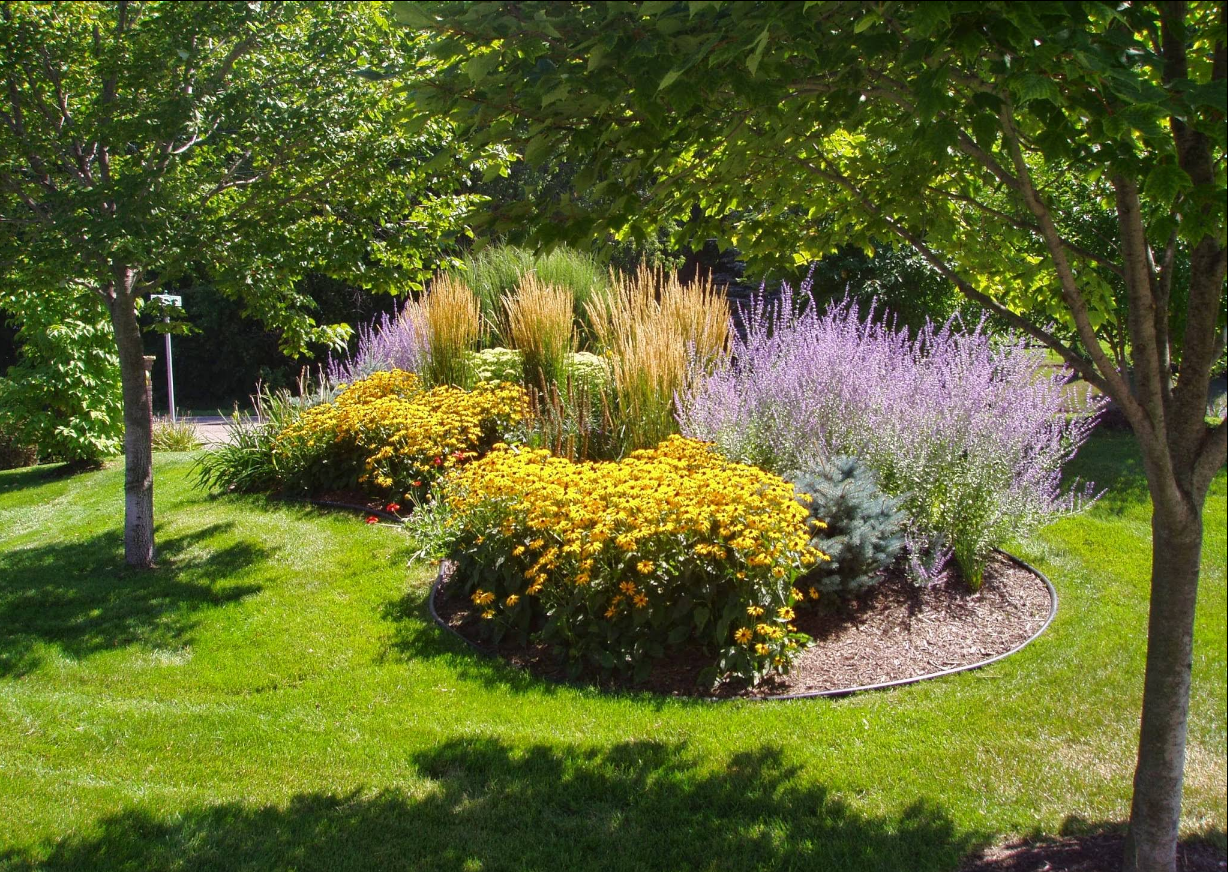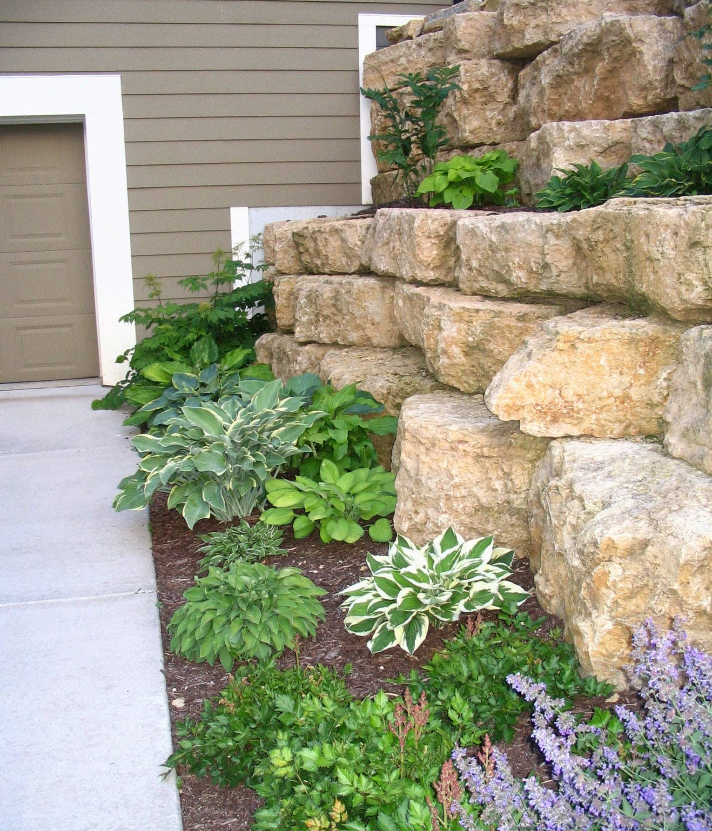Seasonal Landscape Maintenance Northfield MN
Year-Round Yard Care
Every Season Brings New Opportunities for Landscape Success
At Landscape Gal, we design outdoor spaces to last — but that longevity depends on how your landscape is cared for throughout the year. From early spring thaw to deep winter dormancy, Minnesota's seasons place unique demands on lawns, gardens, and hardscapes.
Understanding what your landscape needs in each season helps you preserve plant health, prevent damage, and keep your yard looking beautiful and functional year-round. Whether we’ve installed a garden, patio, retaining wall, or all of the above, this guide outlines the seasonal tasks you can take on to keep everything performing at its best.
These recommendations apply specifically to properties across Northfield, Rice County, and the broader southern Twin Cities metro.
Spring (Late March – May)
Spring is your landscape’s reboot season. As snow melts and soil warms, plants wake up and water begins to flow again.
Clean-Up & Prep
- Rake out leaves and debris from planting beds and lawn areas
- Cut back ornamental grasses and perennials (if not done in fall)
- Remove any winter mulch used for protection
Lawn & Garden Tasks
- Lightly dethatch if lawn feels spongy
- Apply a slow-release fertilizer once soil temps hit 50°F+
- Spot-seed bare lawn areas and top-dress with compost
- Divide and transplant perennials before bloom
Structural Checks
- Inspect patios, steps, and retaining walls for frost heave
- Clear debris from rain gardens and drainage zones
- Power sweep or lightly rinse pavers and stone paths
Summer (June – August)
Summer is all about monitoring, maintaining, and watering wisely. It’s also the time your landscape is most actively used — so efficiency and aesthetics both matter.
Lawn & Irrigation
- Mow high (3–4") and sharpen mower blades
- Water deeply 1–2 times per week early in the morning
- Watch for signs of drought stress or overwatering
Garden Maintenance
- Deadhead spent blooms to encourage rebloom
- Weed regularly — pulling is easier after rain
- Add mulch where needed to reduce evaporation
- Prune flowering shrubs after bloom as needed
Hardscape Care
- Keep patios and paths swept to avoid staining
- Check irrigation heads near hardscapes to avoid overspray
- Monitor retaining walls and steps for signs of shifting or soil washout
Fall (September – November)
Fall is one of the most important seasons for landscape longevity. It's the time to protect, plant, and prepare for winter.
Lawn & Soil Health
- Aerate compacted soil to improve root development
- Apply a winterizing fertilizer with higher potassium
- Overseed thin lawn areas early in the season
- Keep mowing until the grass stops growing
Plant & Bed Care
- Cut back perennials after frost (or leave for winter interest)
- Remove annuals and compost healthy plant material
- Add a fresh layer of mulch to insulate roots
- Plant spring-blooming bulbs before freeze
Winter Prep
- Drain irrigation systems and disconnect hoses
- Remove or cover pots and fragile garden decor
- Secure loose stones or edging that could shift during freeze-thaw
Winter (December – February)
Your landscape rests during winter — but it still needs a little attention. These tasks help prevent damage and prepare for spring.
Protection & Monitoring
- Avoid piling snow on garden beds or against retaining walls
- Use de-icers cautiously around hardscapes to prevent corrosion
- Brush heavy snow from shrubs to prevent breakage
- Monitor for animal browsing (rabbits, deer) on young trees
Planning & Observation
- Take note of wind patterns, sun angles, and water runoff during melts
- Consider adjustments to grading or plant placement for next year
- Start planning your next project with Landscape Gal
FAQs – Seasonal Landscape Care
When is the best time to plant new perennials or shrubs?
The best times are early spring and early fall. These seasons provide cool temperatures and consistent moisture, helping roots establish before extreme weather.
How often should I mulch my garden beds?
Once or twice per year. Spring mulching improves moisture retention and weed control. Fall mulching insulates plant roots over winter.
What’s the best fertilizer schedule in Minnesota?
We recommend a light spring fertilizer, a summer maintenance feeding (if needed), and a winterizer in early fall. Avoid heavy feeding in mid-summer heat.
Do I need to clean my rain garden every season?
At minimum, clean it in spring and fall. Remove sediment, leaves, and dead growth to keep water flowing correctly.
Should I prune trees and shrubs in fall or spring?
It depends on the species. In general, prune spring-blooming shrubs after bloom, and structural prune trees in late winter when dormant.
Care with the Seasons Builds Resilient Landscapes
Your landscape isn’t static — it changes with every season. By knowing what to expect and when to act, you can avoid costly repairs and keep your property looking its best throughout the year.
At Landscape Gal, we design and build outdoor spaces with Minnesota’s climate in mind. But even the best-built landscape thrives with thoughtful seasonal care. Whether you’re new to gardening or a seasoned homeowner, this guide is your roadmap for success.
Let us know if you need seasonal help, consultations, or fresh ideas for your evolving space.
Contact Landscape Gal
3343 Union Lake Trl, Northfield, MN 55057
Monday–Friday, 7:30am – 5:30pm



